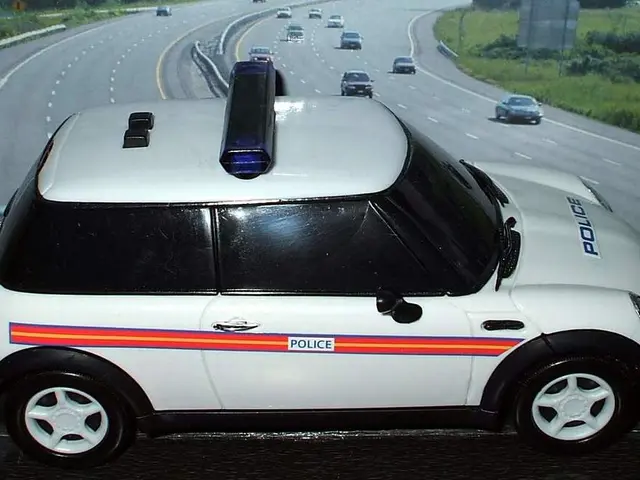Guide: Essential Tasks for Expats Moving to Italy in 2025 (U.K. Residents)
Moving to Italy Post-Brexit: A Comprehensive Guide for UK Nationals
British nationals, seeking a new life in Italy after Brexit, face new immigration rules similar to those for non-EU citizens. below is a detailed guide to navigating the visa and residency permit process in Italy for UK expats.
Key Changes Post-Brexit
- Residents in Italy prior to December 31, 2020, under the Withdrawal Agreement can maintain their residency rights by registering with Italian authorities[1].
- New arrivals are subject to the usual immigration rules for non-EU/EEA nationals[1][2].
Visas for UK Nationals
There are several visas available for UK citizens, based on their reasons for moving:
- Elective Residency Visa: Ideal for retirees or those with sufficient passive income[3]. Applicants must provide proof of income and suitable accommodation.
- Self-Employment Visa (Libero Professionista): Suitable for freelancers and independent professionals. Requires a comprehensive business plan and evidence of professional qualifications.
- Work Visa (Lavoro Subordinato): Essential for those with a job offer from an Italian employer. The employer usually leads the application process.
- Student Visa: For scholars enrolled in Italian educational institutions. Applicants must offer proof of admission and financial means.
- Digital Nomad Visa (anticipated in 2025): Designed for remote workers, though specifics are yet to be finalized[2].
Application Process
1. Determine the Appropriate Visa Type: Select the visa best suited to your reason for moving (work, study, retirement, freelancing, or remote work)[4].2. Gather Required Documents: Prepare documents such as: - Valid UK passport - Proof of income or financial means (amount varies by visa type) - Health insurance coverage - Accommodation arrangements - Job offer (for work visas) or enrolment letter (for student visas) - Business plan (for self-employment visas)
3. Apply at the Italian Consulate or Embassy in the UK: Submit your visa application, passport, support documents, and the required fee.4. Receive Entry Visa: If approved, you will receive a visa authorizing you to enter Italy.5. Register in Italy: Within eight days of arrival, apply for a residency permit (permesso di soggiorno) at the local immigration office (questura).6. Residency Permit: Regularly renew the permit to maintain your residency status and comply with Italian legislation[4].
Associated Challenges
- Documentation Requirements: Gathering documents can be complex and time-consuming.
- Language Barrier: Italian bureaucracy often requires knowledge of Italian [5].
- Processing Times: Visa and residency permit processing can be drawn-out, sometimes taking several months.
- Legislation Changes: New rules or visa categories may be introduced, necessitating staying informed [2][5].
- Job Market Restrictions: Work visas are usually employer-specific, making career changes tricky without reapplying [2].
Key Takeaways
- UK expats moving to Italy post-Brexit must carefully determine the appropriate visa, gather extensive documentation, and navigate the Italian immigration process[6].
- Healthcare access is contingent on one's residency status. Those covered by the Withdrawal Agreement retain rights; new arrivals need private insurance or Italian healthcare registration[1].
- UK nationals are entitled to visit the Schengen Area visa-free for up to 90 days within every 180-day period; extended stays require a visa and residency permit[1][6].
In conclusion, UK nationals moving to Italy post-Brexit should meticulously choose the suitable visa, collect a wealth of documentation, and persevere through the Italian immigration process, which could present numerous bureaucratic and practical challenges[2][6].
[1] https://www.gov.uk/guidance/living-in-italy#healthcare[2] https://www.expatica.com/it/moving-to-Italy[3] https://www.italymovilita.esteri.it/home/en/vistitele_0[4] https://www.expatica.com/it/itallian-law/residents-guides/moving-to-Italy-what-you-need-to-know[5] https://www.ireland.angloinformation.com/moving-to-Italy[6] https://eu.usembassy.gov/european-union/brexit-uk-nationals-residing-european-union-member-states-3/
- UK nationals relocating to Italy following Brexit must adhere to new immigration policies akin to non-EU citizens.
- Individuals who lived in Italy before December 31, 2020, under the Withdrawal Agreement can maintain their residency rights by registering with the Italian authorities.
- Newcomers to Italy will be subject to the standard immigration rules applied to non-EU/EEA residents.
- The Elective Residency Visa, appropriate for retirees or digitally nomads with adequate income, necessitates proof of income and accommodation.
- Self-Employment Visa applicants, including freelancers, must provide a detailed business plan and evidence of professional qualifications.
- To secure a Work Visa, UK expats must have a job offer from an Italian employer, with the employer typically leading the application process.
- The Students Visa is for scholars enrolled in Italian educational institutions, requiring admission and financial means proof.
- Italians offer the Digital Nomad Visa for remote workers, but specifics are yet to be finalized.
- The visa application process involves selecting the suitable visa, preparing necessary documents, and submitting them to the Italian Consulate or Embassy in the UK.
- Upon approval, UK expats will receive an entry visa authorizing them to enter Italy.
- Within eight days of arriving in Italy, they must apply for a residency permit (permesso di soggiorno) at the local immigration office (questura).
- UK expats should regularly renew their permesso di soggiorno to maintain their residency status and abide by Italian law.
- Aside from navigating the Italian bureaucracy and preparation of various documents, UK nationals might experience longer visa and residency permit processing times, potential changes in legislation, job market restrictions, and a language barrier.






